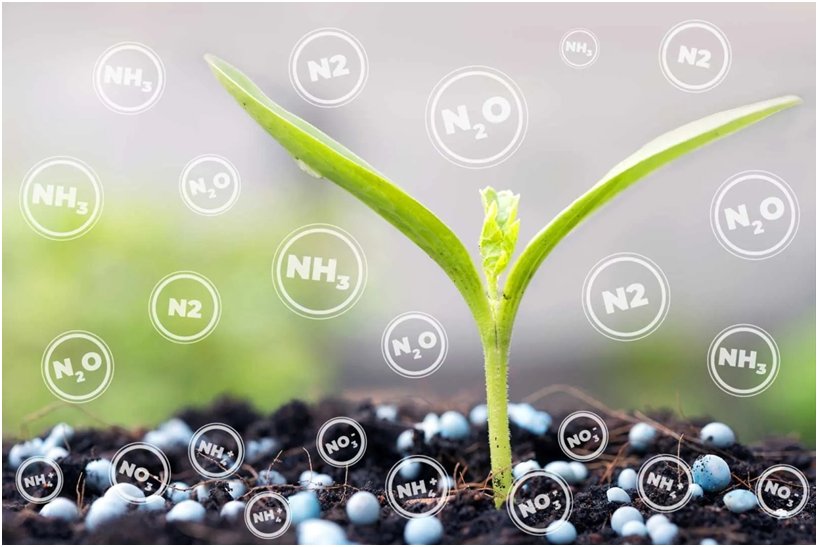
Exhibition time: 17-19 March, 2026 Shanghai, China
 中文
中文

Exhibition time: 17-19 March, 2026 Shanghai, China
 中文
中文

Now is the time to understand nitrogen stabilizers.
Nitrogen stabilizer products are valuable management tools for preventing loss of nitrogen fertilizer and increasing nitrogen use efficiency by the crop.
Knowing how these products work and the scenarios in which they will provide the greatest benefit will help you maximize effectiveness.

Nitrogen stabilizers inhibit specific parts of the nitrogen cycle that lead to losses. The two broad categories of stabilizer products are urease inhibitors and nitrification inhibitors.
Urease inhibitors prevent the enzyme urease from converting urea into ammonium. During this conversion process, ammonium becomes susceptible to gaseous losses as ammonia. This loss can occur within hours of urea-containing fertilizer being applied to the soil surface. Once urea is incorporated into the soil — through tillage, injection, or a gentle soaking rain — ammonia volatilization is greatly reduced. Urease inhibitors will provide the greatest benefit when urea is applied to the soil surface without any kind of soil incorporation. The urease inhibitor will give the fertilizer enough time to be soaked into the soil by rainfall, such that when urea does get converted to ammonium, it will be trapped in the soil profile rather than volatilize into the atmosphere.
Urea granules can be coated with a urease inhibitor prior to application and the urease inhibitor can also be mixed into a urea ammonium nitrate (UAN) liquid solution. When applying UAN solutions, the urease inhibitor will provide the biggest benefit when the solution is broadcast sprayed on the field, such as when UAN is used as a carrier for herbicides. Banded applications of UAN, such as when sidedressing with drop tubes, have a reduced volatilization potential to begin with since the surface area of the applied fertilizer band is less than with a broadcast spray, and also because the UAN solution soaks deeper into the soil when banded.
Therefore, the scenarios in which a urease inhibitor will provide the greatest benefit is when surface applying urea without incorporation and broadcast spraying UAN solution.
Nitrification inhibitors are actually a pesticide that kills a specific group of nitrifying bacteria. These bacteria are the organisms responsible for converting ammonium to nitrate. Nitrate is susceptible to losses through leaching, since nitrate is a negatively charged ion and cannot be held on the soil’s cation exchange sites. Nitrate can also be lost into the atmosphere through denitrification in warm, waterlogged soils.
Nitrification inhibitors will provide the greatest benefit in scenarios where nitrate leaching losses or denitrification losses are likely. For leaching losses, this would be for urea or ammonium containing fertilizers applied in the fall for a crop the next spring, since wintertime is the period with the greatest leaching losses. Temperature also plays a factor, as cool soil temperatures naturally reduce the activity of nitrifying bacteria.
Therefore, nitrification inhibitors will provide a greater benefit for early fall applied fertilizer (when the soil temperatures are warm) as compared to late fall applied fertilizer (when the soil temperatures are cool).
For preventing denitrification losses, nitrification inhibitors will provide the greatest benefit when used on fields that are poorly drained.
Each type of nitrogen stabilizer product has specific active ingredients that you should look for on the product labels to verify that you are using a legitimate product.
Urease inhibitors most commonly use the active ingredient N-(n-Butyl) thiophosphoric triamide (NBTPT or NBPT). Phenylphosphorodiamidate (PPD/PPDA) is another urease inhibitor, and the fertilizer ammonium thiosulfate itself can also inhibit urease.
For nitrification inhibitors, the most commonly used active ingredients are 2-chloro-6-(trichloromethyl)-pyridine (Nitrapyrin), dicycandiamide (DCD) and 3,4-dimethylpyrazole phosphate (DMPP). These active ingredients are used in a number of commercial products sold by different companies under different product names. The Nutrientstar website is useful for learning more about specific commercial products. This website compiles research results for a number of different fertilizer management products and can show you the number of trials that were conducted and a summary of the results, including the yield increases associated with using the product.
As with any tool, the greatest benefits and efficacy are generated by using the right tool, in the right place, and at the right time. Understanding how urease and nitrification inhibitors function to prevent nitrogen losses and the scenarios in which potential nitrogen losses are greatest will allow you to use these products most effectively.
Source from lancasterfarming